Regenesis Remediation Services™ – LNAPL Recovery & In Situ Chemical Oxidation
Combined Treatment Remedies Reduce Contamination Concentrations at a Former Service Station
Regenesis Remediation Services (RRS) was contracted to remediate a dissolved-phase and residual LNAPL petroleum hydrocarbon plume resulting from historic petroleum fuel releases at a former service station. RegenOx® PetroCleanze™ (PetroCleanze) was chosen as the primary remediation technology in addition to Oxygen Release Compound (ORC®) Advanced, to facilitate recovery of residual LNAPL and chemically oxidize contaminants without negatively impacting sensitive infrastructure. ORC Advanced was applied during the second PetroCleanze application to promote the enhanced aerobic bioremediation of dissolved phase petroleum hydrocarbons.
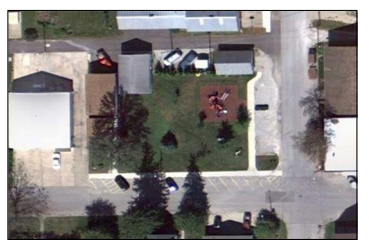
Eighteen direct-push injection points were used to apply the reagents in the silty sand aquifer and saturated soil over the course of two application events. Vacuum extraction was conducted after each PetroCleanze application to recover residual free-phase petroleum hydrocarbons liberated from the soils. Reagent distribution monitoring during the application events confirmed PetroCleanze was present across the targeted source area. Remediation chemistry was applied via direct-push injection points with a bottom-up approach from 5 to 15 feet below ground surface (bgs). A total of 4,470 pounds (lbs.) of RegenOx PetroCleanze and 720 lbs. of ORC Advanced were injected throughout the course of the two applications.
Former Service Station Treated on Native American Reservation Land
Combined Remedies Used to Remediate BTEX Contamination
Project Highlights
- Enhanced Aerobic Bioremediation and In Situ Chemical Oxidation used to treat high BTEX levels on-site
- Previous remediation activities included soil excavation but contamination persisted
- One application area located in lot used for beef cattle on reservation land and special approvals were required
- Project was state-funded by Pollution Liability Insurance Agency (PILA) of Washington but regulated by Region 10 EPA resulting in extensive coordination between both agencies
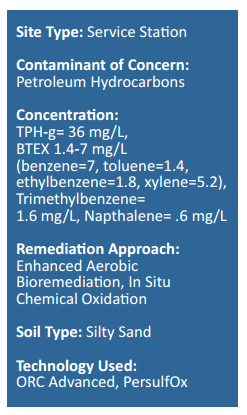
Project Summary
This Wapato, Washington site was a former gas station with historical releases dating back to at least 1995. It is located on a Native American Reservation so the site is regulated through Region 10 of the EPA.
The initial remedial activities consisted of excavation of source area soil but contamination remained. Considering the persistent contamination, the goal of the site was to reduce the remaining concentrations to meet regulatory goals.
Remediation Approach
A combied remedies strategy was devised for this site, including in situ treatment in three separate areas. Two areas were treated with both PersulfOx® and ORC® Advanced.
The third area was an empty lot that was used for ranging beef cattle. The client had concerns about how the treatment might affect the cattle, so only ORC Advanced was applied to this area because it is both insoluable and non-toxic. Because the entire site was located on reservation land it required special approvals by the tribal irrigation office before the injections could occur. A total area of 4,100-square-feet was treated for high levels of BTEX. Monitoring is ongoing.
Technology Description
ORC Advanced is a proprietary formulation of food-grade, calcium oxy-hydroxide that produces a controlled-release of molecular oxygen for periods of up to 12 months upon hydration.
PersulfOx is a sodium persulfate-based chemical oxidation technology which destroys both hydrocarbon and chlorinated solvent-type contaminants in the subsurface. PersulfOx contains a built-in catalyst which activates the persulfate component and generates contaminant-destroying free radicals without the need for the addition of a separate activator
Site Closure Achieved at Colorado Service Station
Benzene Levels Reduced to Below 5 PPB in Clay Soils through Use of ORC® Advanced
Project Highlights
- Benzene concentrations remained on-site despite previous excavation efforts.
- Enhanced aerobic biodegradation using ORC Advanced produced a 99.8% reduction over 12 months.
- Benzene reduced to below detection limits.
- “No Further Action” letter granted in October 2010.
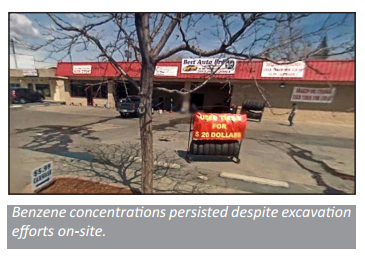
Project Summary
Three underground storage tanks (USTs) were removed at a former tire store as part of corrective measures. Roughly 108 cubic yards of soils were excavated to reduce contamination levels. However, the excavation did not extend below the groundwater interface and residual sorbed contaminant mass remained, resulting in a lingering benzene plume. The client was interested in an in situ approach to reduce the remaining benzene contamination to below the Tier 1 risk based screening level of 5 ppb.
Remediation Approach
A direct-push injection of Oxygen Release Compound Advanced (ORC® Advanced) was chosen to reduce remaining soil and groundwater contamination at the location of the former excavation and well BW-1. Maximum TVPH and benzene concentrations in the prior two years were as high as 2.4 mg/L and 0.48 mg/L, respectively. Due to tighter soils, a 7-footon-center grid pattern with 15 injection points was implemented on-site. ORC Advanced was injected from approximately 6 to 13 feet below ground surface with about 1 foot of the injection interval extending above groundwater in the event of rising water levels. A total of 725 pounds of ORC Advanced was injected for this project.
Despite the relatively tight soils and high potential for contaminant back diffusion, the ORC Advanced treatment resulted in consistent downward trends of benzene contamination. A 96.3% reduction in benzene after only 3 months was observed. By month 12, a 99.8% reduction to below detection limits (The site was granted a no further action letter.)
Technology Description
ORC Advanced® is a proprietary formulation of food-grade, calcium oxy-hydroxide that produces a controlled-release of molecular oxygen for periods of up to 12 months upon hydration.
REGENESIS Remediation Services – LNAPL Treated with Combined Remedies
Active Michigan Service Stated Remediated Through Use of PetroCleanze® and ORC® Advanced
RRS was contracted to remediate a residual LNAPL and dissolved phase petroleum plume from historic gasoline and diesel fuel releases at an active service station. PetroCleanze® was chosen as the primary remediation technology to facilitate recovery of residual LNAPL and chemically oxidize contaminants without negatively impacting sensitive infrastructure. ORC® Advanced was also applied with the final PetroCleanze application event and in a downgradient plume cut off barrier to promote the enhanced aerobic bioremediation of the dissolved-phase petroleum hydrocarbons.
Eight injection/extraction wells and 28 direct-push injection points were used to apply the remediation reagents in the silty sand aquifer and smear zone over three application/injection events. Vacuum extraction was conducted between PetroCleanze applications to recover residual free phase petroleum hydrocarbons liberated from the soils. Reagent distribution monitoring confirmed PetroCleanze was dispersed across the targeted source area during each application event.
Prior to the first PetroCleanze application event, no measurable free product was observed on this site since 2006. Less than twenty-four hours after the first PetroCleanze application event, LNAPL was observed in four of the eight wells in the source area at quantities up to three inches thick.
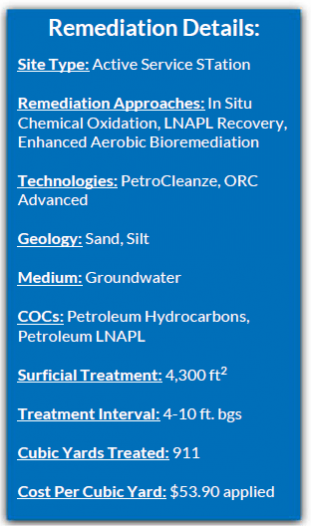
Not more than a sheen was observed in any wells on site after the third injection event. A total of 2,160 pounds of PetroCleanze and 1,120 pounds of ORC Advanced were injected.
Regenesis Remediation Services™ – LNAPL Plume Treated at Iowa Service Station
PetroCleanze and ORC Advanced Remediate Historic Petroleum Hydrocarbon Contamination
RRS was contracted to remediate a dissolved phase LNAPL petroleum hydrocarbon plume petroleum fuel releases at a former service station PetroCleanze® was chosen as the primary remediation technology to facilitate recovery of residual LNAPL and chemically oxidize contaminants without negatively impacting sensitive infrastructure. ORC Advanced was also applied with the final PetroCleanze application enhanced aerobic bioremediation of hydrocarbons.
Eighteen direct-push injection points were used to apply the reagents in the silty sand aquifer and application events. Three vacuum extraction conducted after each PetroCleanze application to recover residual free phase petroleum hydrocarbons liberated from the soils.
Reagent distribution monitoring confirmed PetroCleanze was dispersed across the targeted source area during events.
Direct-push injection points were advanced to 15 feet below ground surface where bottom-up injections were performed to 5 feet. A total of 4,470 pounds of PetroCleanze and 720 pounds were injected.
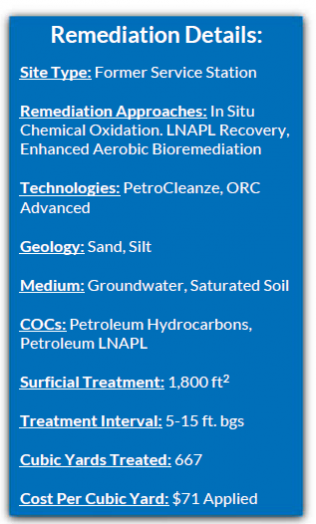

 Americas
Americas Europe
Europe Français
Français Deutsch
Deutsch Italiano
Italiano Español
Español

